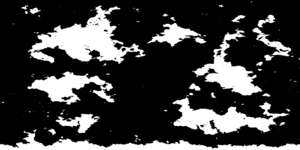Luzonta
This page contains the canonical information about the planet Luzonta, if you are looking for regional information look at Luzonta (Region).
 A black and white map of Luzonta. | |||||||||||||
| Designations | |||||||||||||
|---|---|---|---|---|---|---|---|---|---|---|---|---|---|
| The World | |||||||||||||
| Orbital characteristics | |||||||||||||
| Epoch A2000 | |||||||||||||
| Aphelion | 152100000 km (94500000 mi) | ||||||||||||
| Perihelion | 147095000 km (91401000 mi) | ||||||||||||
| 149598023 km (92955902 mi) | |||||||||||||
| Eccentricity | ~0.0167086 | ||||||||||||
| 365 d (12.0 months) | |||||||||||||
Average orbital speed | 29.78 km/s (18.50 mi/s) | ||||||||||||
| 358.617° | |||||||||||||
| Physical characteristics | |||||||||||||
Equatorial radius | 6378.1 km (3963.2 mi) | ||||||||||||
Polar radius | 6356.8 km (3949.9 mi) | ||||||||||||
| Flattening | 0.0033528 | ||||||||||||
| Circumference | 40075.017 km (24901.461 mi) (equatorial) 40007.86 km (24859.73 mi) (meridional) | ||||||||||||
| 510,072,000km2 (316,944,000 mi2) | |||||||||||||
| Volume | 1.08321 × 1012km3 | ||||||||||||
| Mass | 5.97237 x 1024 kg | ||||||||||||
Mean density | 5.514 g/cm3 | ||||||||||||
| 9.807 m/s2 | |||||||||||||
| 0.3307 | |||||||||||||
| 11.186 km/s (6.951 mi/s) | |||||||||||||
Sidereal rotation period | 0.99726968 d (23.934472 h) | ||||||||||||
Equatorial rotation velocity | 0.4651 km/s (0.2890 mi/s) | ||||||||||||
| 23.4392811° | |||||||||||||
| Albedo | 0.367 geometric 0.306 Bond | ||||||||||||
| |||||||||||||
| Atmosphere | |||||||||||||
Surface pressure | 101.325 kPa (at MSL) | ||||||||||||
| Composition by volume | 78.08% nitrogen (N2) (dry air) 20.95% oxygen (O2) 0.930% argon 0.039% carbon dioxide (climate-variable) | ||||||||||||
Luzonta, or the Earth (Anglish) or Tierro (Spanish) is the fourth planet from the Son. It is the only known planet to accommodate life. There are around 8 million different plant and animal species around the World. Scientific analysis has concluded that Luzonta formed andd developed over 4 billion years ago. The Earth rotates around the Son in 365 and ¼ days, a period commonly accepted as an Earth year. The Earth's surface layer is formed of several slowly moving tectonic plates, interacting to produce mountain ranges, volcanoes, and earthquakes. The Earth's liquid outer core generates the magnetic field that shapes Earth's magnetosphere, deflecting destructive solar winds.
The atmosphere on the Earth is made up of mostly nitrogen and oxygen. More solar energy is received by tropical regions than polar regions and is redistributed by atmospheric and ocean circulation. Water vapor is widely present in the atmosphere and forms clouds that cover most of the planet.